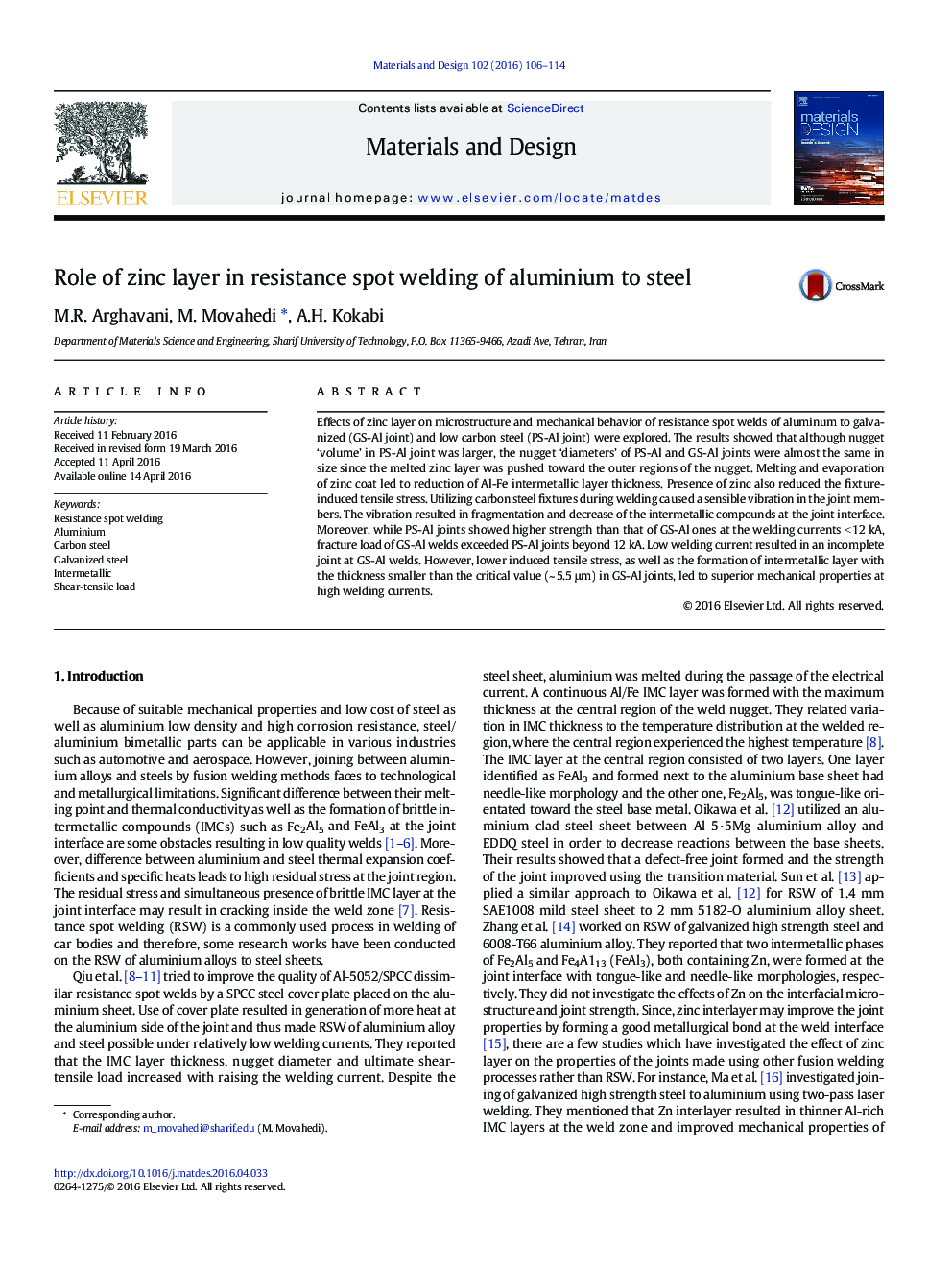| کد مقاله | کد نشریه | سال انتشار | مقاله انگلیسی | نسخه تمام متن |
|---|---|---|---|---|
| 827976 | 1470280 | 2016 | 9 صفحه PDF | دانلود رایگان |
• Role of zinc layer in resistance spot welding of aluminum to steel was explored.
• Melting and evaporation of zinc coat led to reduction of IMC layer thickness.
• Presence of zinc reduced the fixture-induced tensile stress.
• Utilizing carbon steel fixtures caused a sensible vibration in joint members.
• Fracture load of GS-Al welds exceeded PS-Al joints beyond 12 kA.
Effects of zinc layer on microstructure and mechanical behavior of resistance spot welds of aluminum to galvanized (GS-Al joint) and low carbon steel (PS-Al joint) were explored. The results showed that although nugget ‘volume’ in PS-Al joint was larger, the nugget ‘diameters’ of PS-Al and GS-Al joints were almost the same in size since the melted zinc layer was pushed toward the outer regions of the nugget. Melting and evaporation of zinc coat led to reduction of Al-Fe intermetallic layer thickness. Presence of zinc also reduced the fixture-induced tensile stress. Utilizing carbon steel fixtures during welding caused a sensible vibration in the joint members. The vibration resulted in fragmentation and decrease of the intermetallic compounds at the joint interface. Moreover, while PS-Al joints showed higher strength than that of GS-Al ones at the welding currents < 12 kA, fracture load of GS-Al welds exceeded PS-Al joints beyond 12 kA. Low welding current resulted in an incomplete joint at GS-Al welds. However, lower induced tensile stress, as well as the formation of intermetallic layer with the thickness smaller than the critical value (~ 5.5 μm) in GS-Al joints, led to superior mechanical properties at high welding currents.
Figure optionsDownload as PowerPoint slide
Journal: Materials & Design - Volume 102, 15 July 2016, Pages 106–114
